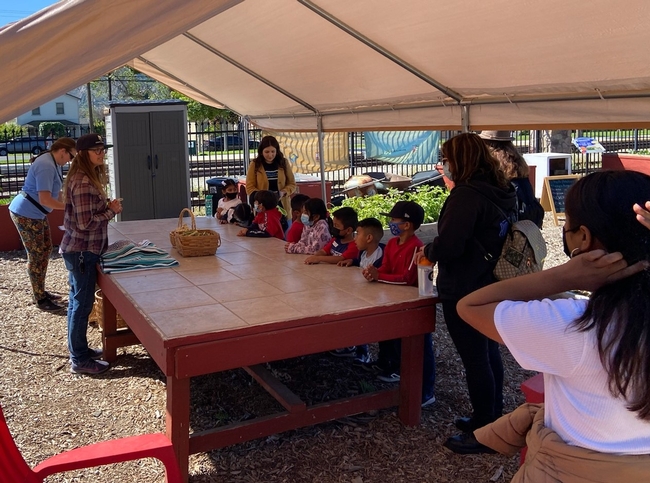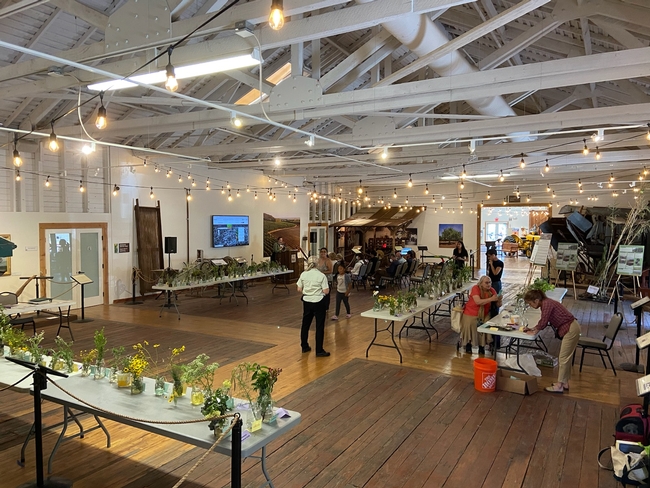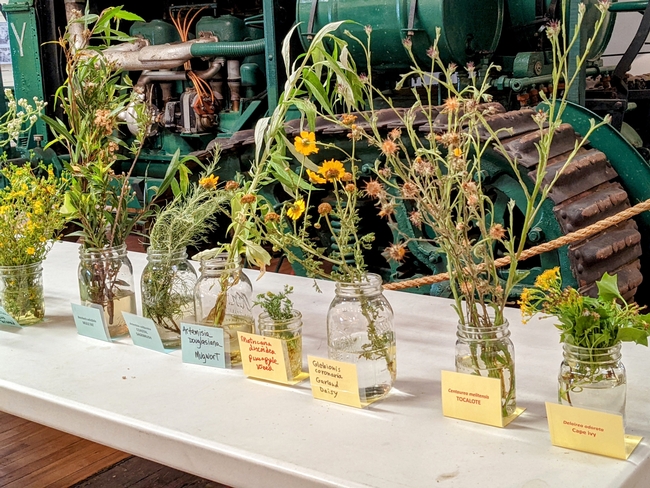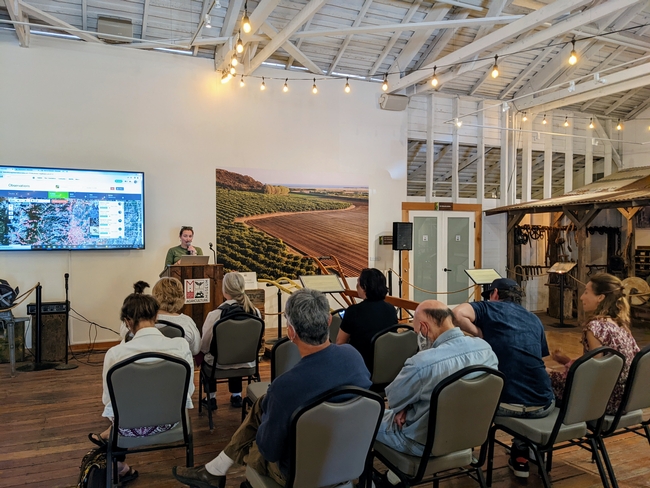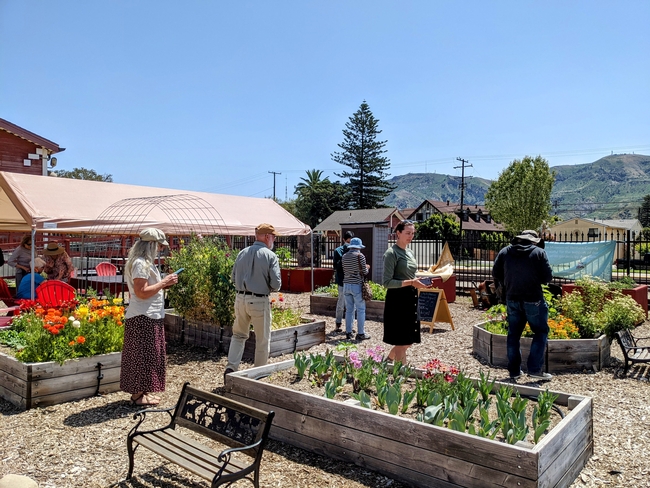
Posts Tagged: resources
Benefits of Trees for Climate Change Mitigation

The best time to plant a tree was 20 years ago. The second-best time is now. – Chinese Proverb What is your happiest memory that involves trees? Hopefully, most of those memories are positive. Trees provide a multitude of benefits that are hard...
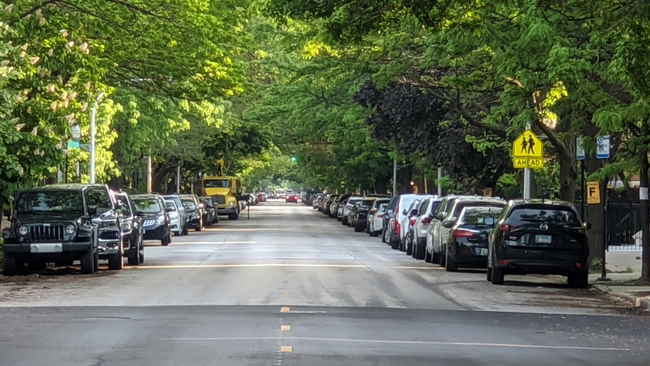
Craig Vodnik on unsplash.com
First Annual VC Weed & Wildflower Show - April 22-24
UCCE Ventura collaborated in this first annual three-day event held at the Museum of Ventura - Agricultural Museum April 22-24. Ventura County Agricultural Commissioner/Weights & Measures (VC-AC/WM) initiated and directed the show, with cooperation from the museum, CE-Ven, Ventura County Master Gardeners (MG), Channel Islands Chapter - California Native Plant Society (CNPS), and Santa Barbara Botanical Garden (SBBG).
The family event included museum garden tours hosted by MG, a mason bee house construction activity by the Museum, iNaturalist participatory-science nature reporting led by SBBG, invasive weed posters created by VC-AC/WM, and the weed and wildflower show display coordinated by VC-AC/WM, CNPS, and CE-Ven.
Several hundred people attended the three-day event. One-hundred twenty weed and wildflower specimens were collected by CNPS and VC-AC/WM.
The maiden event is likely to become an annual springtime occurrence in Ventura County!
Climate Change: What does it mean for Southern California?
Last month, the Thelma Hansen Fund hosted a three-day series to inform about climate change and the science behind it. In an effort to raise awareness of current and predicted impacts on Southern California, the impressive line up of UC...
Summer safety: Tips to avoid foodborne and heat illnesses
Happy summer! It's time to get the barbecue grilling and the pool party started. To keep your summer healthy and fun, UC ANR offers some important safety tips.
Food safety
Food poisoning is a serious health threat in the United States, especially during the hot summer months. According to the Centers for Disease Control and Prevention (CDC), 1 in 6 Americans suffer from a foodborne illness each year, resulting in thousands of hospitalizations and 3,000 deaths.
Both the CDC and U.S. Department of Agriculture (USDA) suggest four key rules to follow to stay food safe:
- Clean: Clean kitchen surfaces, utensils, and hands with soap and water while preparing food. Wash fresh fruits and vegetables thoroughly under running water.
- Separate: Separate raw meats from other foods by using different cutting boards. And be sure to keep raw meat, poultry, seafood and eggs away from other items in your refrigerator.
- Cook: Cook foods to the right temperature; be sure to check internal temperature by using a food thermometer.
- Chill: Chill raw and prepared foods promptly.
Here are some additional tips from the USDA. Be sure to check out the CDC's comprehensive food safety website, which also has materials in both Spanish and English. For food safety tips in real time, follow USDA Food Safety on Twitter.
Summer also means more outside grilling, which can pose unique food safety concerns. Before firing up the barbecue, check out these five easy tips from UC Davis.
Handling food safety on the road
Before you take off on a road trip, camping adventure or boating excursion, don't forget to consider food safety. You'll need to plan ahead and invest in a good cooler.
Remember, warns the USDA, don't let food sit out for more than one hour in temperatures above 90 degrees F. And discard any food left out more than two hours; after only one hour in temperatures above 90 degrees F.
If there are any doubts about how long the food was out, it is best to throw it out!
Get more food safety tips for traveling from the USDA.
Avoid heat illness
“Summer can be a time for fun and relaxation, but in warm climates, we need to stay aware of the signs of heat illness and help keep our family members and co-workers safe,” says Brian Oatman, director of Risk & Safety Services at UC ANR.
“UC ANR provides comprehensive resources on our website, but it's designed around California requirements for workplace safety.” But, Oatman notes, much of the information applies.
“The training and basic guidance – drink water, take a rest when you are feeling any symptoms and having a shaded area available – are useful for anyone at any time.”
To increase your awareness of heat illness symptoms – and to learn more about prevention – Oatman suggests a few resources.
“Our Heat Illness Prevention page has many resources, including links for training, heat illness prevention plans, and links to other sites. One of the external sites for heat illness that I recommend is the Cal/OSHA site, which spells out the basic requirements for heat illness prevention in the workplace. It's also available in Spanish."
For those on the go, Oatman also recommends the National Institute for Occupational Safety and Health (NIOSH) mobile heat safety app.
Healthy Soils Grants Announced!
This week the California Department of Food and Agriculture released the much anticipated Healthy Soils Program awards. Statewide, a grand total of $12.48 million will be supporting 217 projects that build soil health, increase soil organic matter, and decrease greenhouse gas emissions through agricultural land management practices. On a national scale, this funding represents the country's largest investment in building healthy soils as a climate mitigation strategy. This is great news for farmers, ranchers, and the soils of California.
The program funds farmers and ranchers to implement practices such as cover crops, reduced tillage, mulch application, development of grazing management plans, compost application, and the establishment of windbreaks or hedgerows. The awards support both incentive projects and demonstration projects under the umbrella of the Healthy Soils Program. CDFA selected 194 incentives projects to receive $8.7 million in funding across 45 counties and 23 demonstration projects to receive $3.8 million in funding across 16 counties.
So, what happened in Ventura County? I am sure you are eagerly awaiting the local news! In our county, we have 1 demonstration project and 3 incentive projects that received funding. That is a huge increase from the previous round in which Ventura County only received 1 incentive grant. See below for details on the projects funded for the county.
Incentive Projects
|
Organization |
Brief Description |
Total Funding ($) |
Estimated GHG Reduction (MTCO2eq/yr) |
|
King & King Ranch |
Converting 32 acres to no-till and planting windbreaks. |
$6,794.94 |
12.6 |
|
The Abundant Table |
Increase cover crop rotation, plant hedgerows, and apply compost. |
$23,589.79 |
42.2 |
|
Clow Ranch |
Apply mulch to avocado and lemon orchards. |
$74,778.09 |
3.0 |
Demonstration Project
|
Organization |
Brief Description |
Total Funding ($) |
Estimated GHG Reduction (MTCO2eq/yr) |
|
Ventura County RCD + Limoneira |
Research the impacts of various compost and mulch applications on a newly planted lemon orchard. |
$249,546.00 |
21.4 |
For a full list of projects and project descriptions, please go to the websites for the CDFA Healthy Soils Incentive Program and the CDFA Healthy Soils Demonstration Program.
Stay tuned for updates on how these projects progress and opportunities to come see Healthy Soils in action in Ventura County!
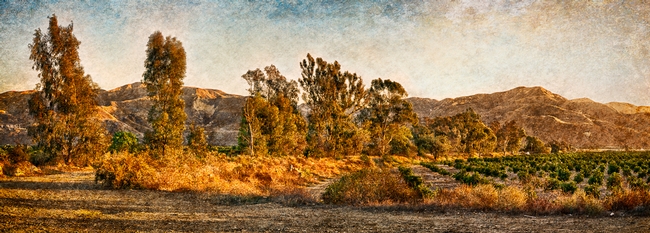
Climate smart agriculture encompasses management practices that increase soil carbon sequestration, reduce greenhouse gas emissions, improve yields and efficiencies, and promotes climate resilience. The California Department of Food and Agriculture (CDFA) supports three funding opportunities in climate smart agriculture: the Healthy Soils Program, the State Water Efficiency & Enhancement Program, and the Alternative Manure Management Program.
In a collaborative partnership, CDFA and UC Agriculture and Natural Resources have teamed up to support 10 community education specialists throughout the state to provide technical assistance and outreach for the climate smart agriculture programs. As one of these technical assistance providers, my role is to promote and support the adoption of these programs in Ventura County. If you are interested in working with me, please contact me at amrowe@ucanr.edu.

